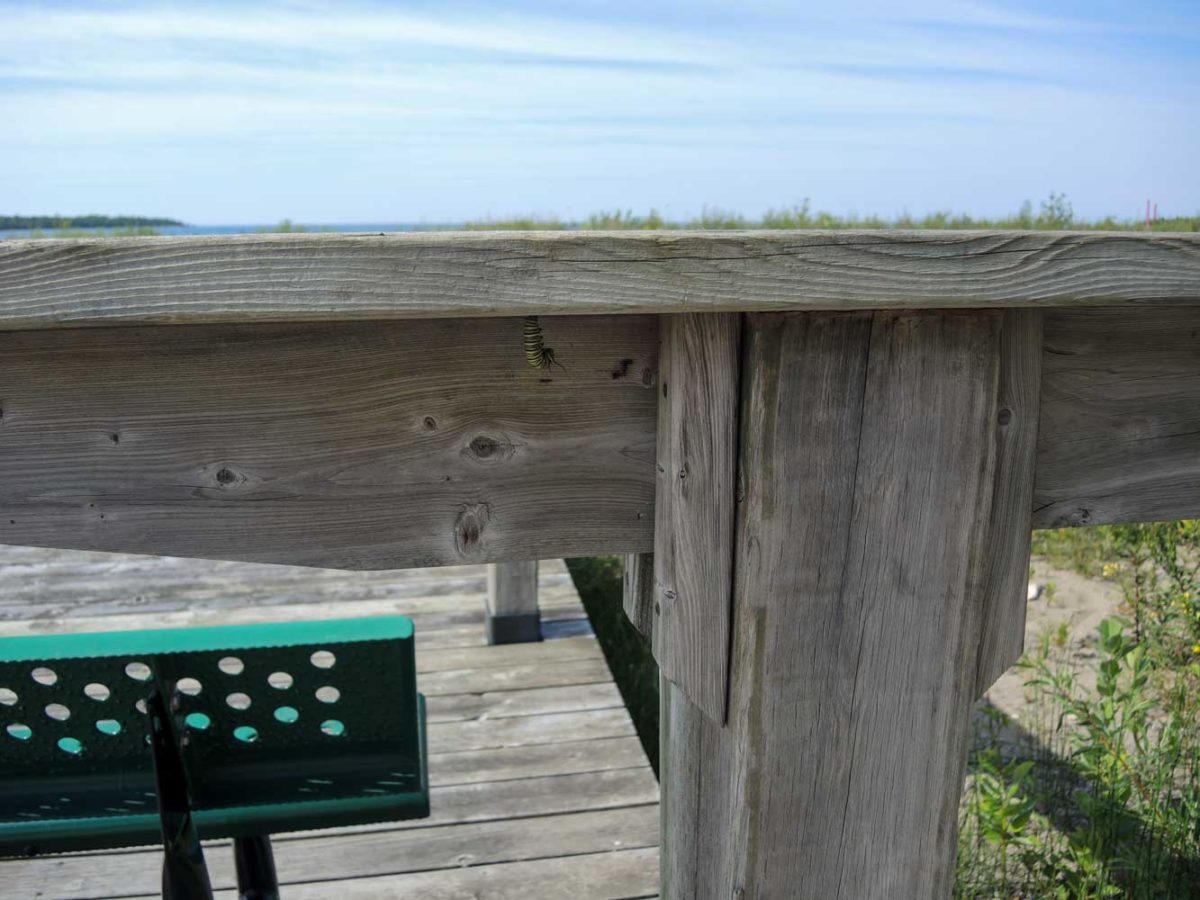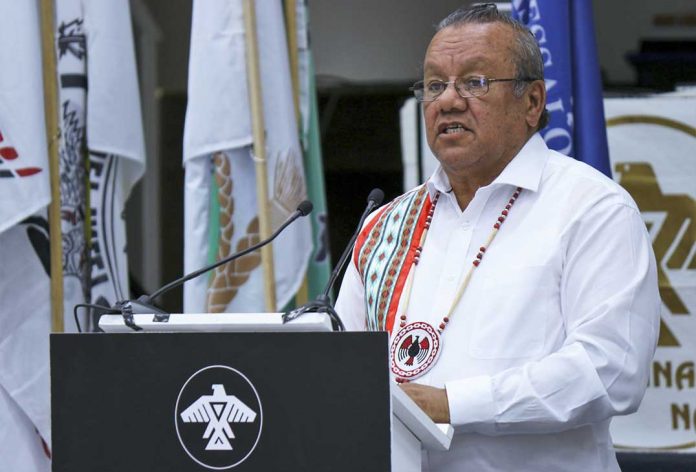MANITOULIN – The results have been tallied from the second annual Manitoulin Monarch Butterfly count hosted by Wiikwemkoong’s Species at Risk (SAR) program last month. Searchers reported monarchs from Wiikwemkoong Marina, South Bay, Providence Bay, Misery Bay, Evansville, Elizabeth Bay, Kagawong, Maple Point, Sheguiandah, Bidwell, Tehkummmah and Little Current. The distinctive orange and black adult butterfly as well as larvae (caterpillars), chrysalises and eggs were all counted.
A total of 19 searchers counted at 27 locations for 15.9 person hours, about half an hour less than last year. In that time, 123 adults, 110 larvae (caterpillars), 80 eggs and 93 chrysalises were seen. Over 6,000 milkweed plants (the food of the larvae) were checked.
At Providence Bay on August 8 an organized search was coordinated by Dr. Joe Shorthouse. He reported that five masked searchers spent an hour and a half counting on the dunes in the large milkweed patch east of the river along the boardwalk. The group counted 44 adults (the second and third generations), 62 larvae and 86 chrysalises, which were especially prevalent under the boardwalk. The boardwalk may be a key factor in the very healthy population at this site. Searchers were so busy counting these life stages that they did not have time to look for eggs.
At the Wiikwemkoong Marina, SAR project biologist Judith Jones reported that there were many fewer milkweeds because the lake is so high and there is much less beach. Many of the remaining milkweeds were in wet ground and did not look healthy. Still, some adults and larvae were present on the few good plants.
This year’s count took place two weeks later than last year’s. Ms. Jones said this was due to the COVID-19 work slow-down during May and June, which delayed getting the event planned and publicized for July. As a result of the later date, many fewer adults were seen because the second generation was finishing up while the third generation was still in the early life stages (egg, larvae, chrysalises).
This event does not come close to counting very much of the total Manitoulin Island population of monarchs. However, these same locations and routes can be counted again in future years for the same length of field time, which will give stats that can be compared from year to year.
For example, last year, with roughly the same number of person hours and roughly the same number of milkweed plants, searchers counted 389 adults, 280 larvae, 66 eggs and 12 chrysalises. In addition to differences from the later date, the abundant population in Kaboni was not counted this year. It is a known site so searching was focused elsewhere. Some of the differences may also be due to a more systematic count at Providence Bay.

Even though dates and methods do not line up perfectly, the count shows that monarchs are widespread and reproducing at most locations on Manitoulin Island. Wiikwemkoong is still interested in hearing reports of large populations of monarchs or large patches of milkweed at any location. No count is required. The information can be sent to manitoulinmonarchs@yahoo.com
Most of the threats to the monarch, a migrating species, occur in the very limited area of their wintering grounds in Mexico. The best way to help the monarchs here at home is to make sure their food source, common milkweed, does not get trampled or mowed down. If monarchs are present, it is best to make sure no one steps on the plants or drives over them.
Monarchs are now into their final generation of the season. The adults that are hatching now will be the ones to migrate to Mexico. Starting next week and through early September, flocks of monarchs will be staging along the Lake Huron shore before attempting to cross the big water. It will be possible to see dozens of adults hanging onto bushes and plants along the shore—a truly beautiful sight. We wish the monarch bon voyage, and hope to see you next summer!





